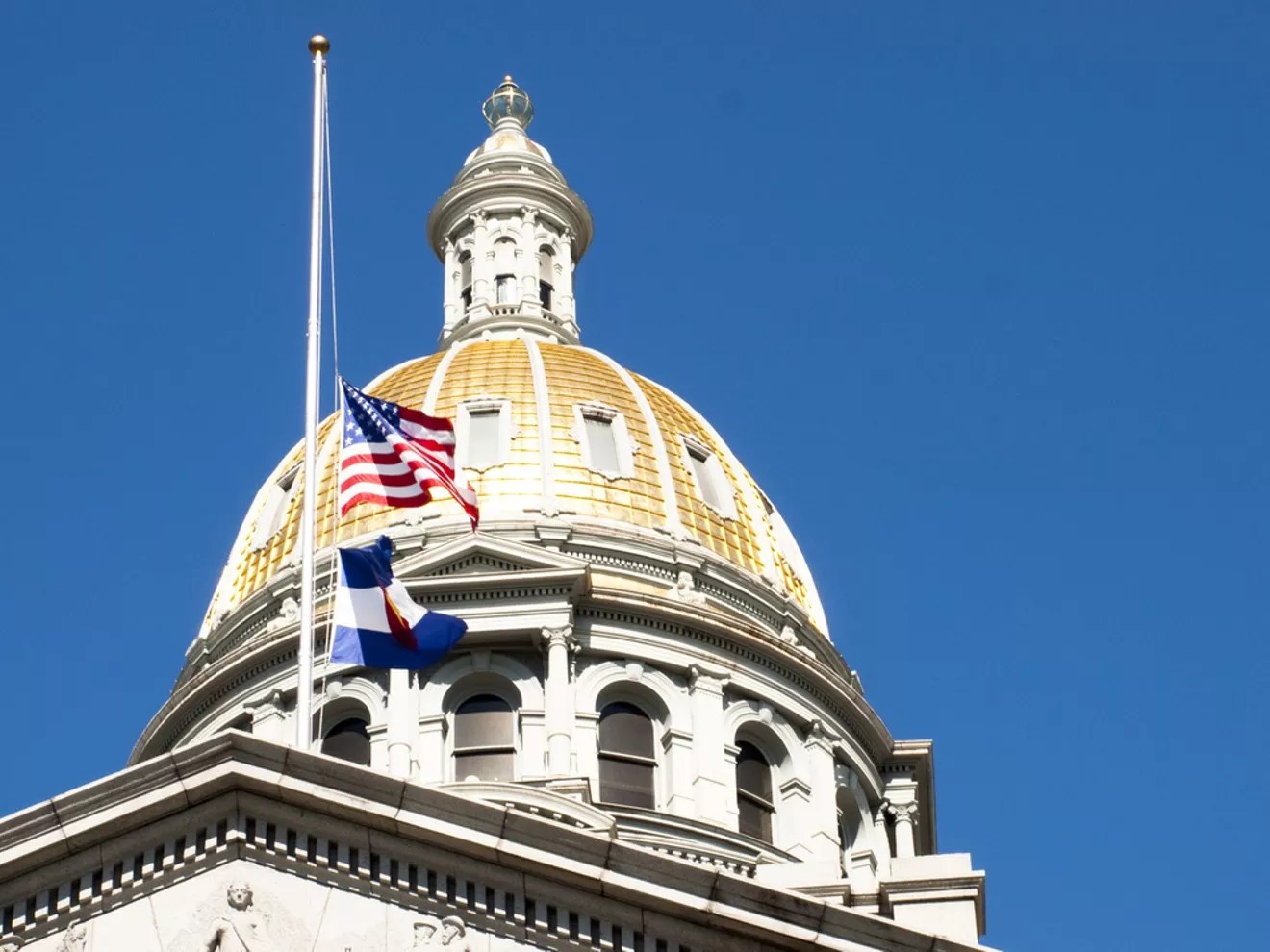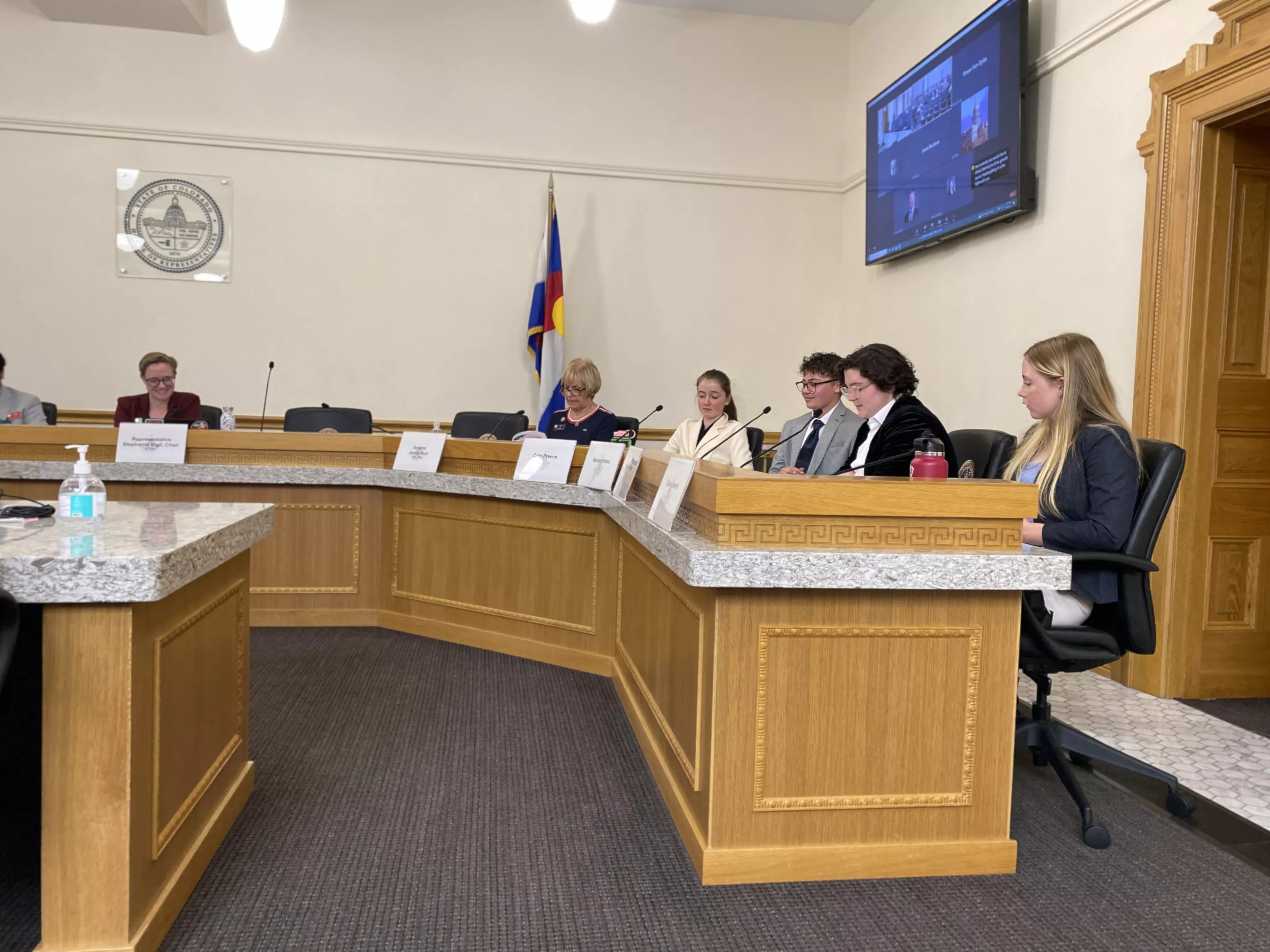
Arina P Habich/Shutterstock.com

Audio By Carbonatix
Young Coloradans are often affected by policies passed by the state legislature while not being old enough to have a say in such legislation. But what if the kids were in charge?
The Colorado Youth Advisory Council, established by lawmakers in 2008, is answering that query this year with a series of policy solutions put forth by high school students in the areas of youth violence, mental heath, racial equity in education and gender-affirming practices in schools.
“The greatest impact it’s had on me is that I’m not relying on other people to do the work,” says Leigh Schmidt, an alum of the program. “I’m not trying to persuade legislators to do the work. I am actually the one doing it myself.”
Members of the Youth Advisory Council – high school students ages fourteen to nineteen – serve two-year terms, during which they identify problems and research solutions that could turn into actual state legislation. In the 2021 legislative session, for example, four different COYAC proposals were pushed through and made into law.
Denver, make your New Year’s Resolution Count!
We’re $17,500 away from our End-of-Year campaign goal, with just a five days left! We’re ready to deliver — but we need the resources to do it right. If Westword matters to you, please contribute today to help us expand our current events coverage when it’s needed most.
Schmidt, who is heading to George Washington University after graduating from Lakewood High School, completed her two-year term in June, but she is continuing to testify in this session’s committee, owing to her passion for the subject matter.
The Colorado Youth Advisory Council Interim Committee, which reviews the work of the Youth Advisory Council and recommends legislation, comprises three elected Democrats and two Republicans from the legislature, in addition to the seven youths selected for the program from the forty COYAC members.
“I’ve learned a ton about the state government, and it’s helped me figure out what I want to do going forward,” Schmidt says. She plans to study international relations with a minor in Spanish and eventually run for local office.
The former councilmember will definitely have the experience if she does: Students are questioned with vigor by the members of the advisory committee in the legislature and don’t get a free pass when it comes to their ideas. “It’s the same work that the legislators do themselves,” Schmidt explains. “The adults in the legislature are not in schools every day, so they just don’t have the same perspective that we do.”
Here’s an overview of each 2023 student proposal:
Youth Mental Health and Licensed Psychologists
“Every single young person knows someone who struggles with mental health,” testified COYAC participant Sidd Nareddy at an August 9 committee meeting. “Solutions simply have not worked to the degree that they should, which is why we need to try something new.”
Nareddy cited Healthy Kids Colorado data from 2021, in which 40 percent of kids surveyed faced depression and 17 percent considered suicide. Across Colorado, 124 of the state’s 188 school districts do not have licensed school psychologists, he continued. In the schools that do, 31 of them do not meet the National Association of School Psychologists’ recommended ratio of one psychologist to every 500 students.
“With these high ratios, students are unable to build strong relationships with the psychologists that they’re seeing, and this ends up worsening patient outcomes overall,” Nareddy concluded.
After finding that only a quarter of those who graduated from licensed school psychology programs in Colorado ended up remaining in the state after one year, the COYAC crew proposed student loan relief for practicing school psychologists who work for three years in districts that previously did not have one.
“Colorado is an expensive place to live, and oftentimes the wages for school psychologists in these underserved areas are not necessarily up to par with what they may find in other states,” Nareddy said.

Students in COYAC learn what it’s like to legislate.
Leigh Schmidt
How to Decrease School Shootings
COYAC member Cate Preece shared that the students found several issues related to school shooting prevention. First off, school resource officers are under-researched.
“According to a study by Brown University, school resource officers – while they do prevent violence in schools – are not shown to prevent gun violence in schools,” Preece said. “They are shown to increase arrests, expulsions and long-term absences, especially for minorities and students of color.”
Next, the students observed issues with Safe2Tell, the state’s anonymous reporting method established after the Columbine shootings. Its annual report is not peer-reviewed, and Preece noted that there is a stigma around those who use Safe2Tell being considered snitches.
The students also found that threat assessment in the schools is inconsistent across the state.
Currently, there is no required assessment, and the 2015 Claire Davis School Safety Act – established after its namesake teen was murdered at school – causes schools to be hesitant to label students as threats, Preece said.
The act “says that schools are liable for any gun violence from students that they’re currently assessing like that,” she continued. “This makes schools more eager to expel students rather than support them through threat assessment or other mental health support.”
To make matters worse, there are also not enough counselors to provide that support, as Nareddy showed. Therefore, COYAC is proposing the creation of a task force to research counselors in schools, threat assessment training and the efficacy of programs like SROs and Safe2Tell. The students also want to require school districts to post information about safe storage of guns on their websites annually, in order to make the state’s safe storage gun laws more visible to parents.
Teaching Asian American History in Schools
Another proposal seeks to improve how Asian American history is taught in schools, including instructing students on modern-day racism.
“As a half-Japanese student whose grandmother was born at Amache, which was the Japanese internment camp in southern Colorado, this issue is especially important to me,” testified Camryn Sample. “Although I’ve grown up learning about her experiences from family members, I’ve scarcely ever learned about the Japanese internment camps in school.”
Sample cited a 2019 state law that sends funding to public schools to teach “history, culture, and social contributions of American Indians, Latinos, African Americans, and Asian Americans,” among other groups. But the law, Sample said, is too broad to be effective when it comes to Asian American history.
“Our committee wants to continue its efforts by creating an ethnic study commission and expand on the bill,” she proposed. The state can’t compel schools to teach certain curriculum, but it can track it, and that is what the students are asking for. They also suggest that the state invest in a resource bank that teachers can use to help with lesson planning on Asian American history.
Resource Assistance in Public Schools

Students from across the state are part of the Colorado Youth Advisory Council.
Leigh Schmidt
COYAC representative Reese Van Dyke put forth a proposal that would create resource banks in schools that include hygiene items such as menstrual products, hair brushes, deodorant and other items that can be hard for low-income families to afford.
The students suggested a state grant program that allots money based on the number of students at each school who qualify for free and reduced lunch. Senator Janice Marchman, a member of the Youth Advisory Council Committee, asked why the Menstrual Hygiene Products in Schools Program set up by the legislature in 2020 wasn’t sufficient.
“This bill provided menstrual products within school bathrooms to be used at school,” Van Dyke responded. The current proposal would allow students to ‘shop’ at the hygiene resource bank and take the items home.
Non-Legal Name Changes in Schools and Gender-Affirming Care
The last two proposals focused on helping students who are transgender or otherwise outside the gender binary.
Students Meghan Taylor and Schmidt both testified about experiences they’ve had worrying that their transgender friends would take their lives because of a lack of acceptance and the inability to access medical care.
“When I was fifteen, I found myself reaching out for gender-affirming care,” testified Mason Evans, another COYAC participant. “I was struggling to get out of bed, to go to school, to do my work, to live. Every day. Because I lived in a world that did not see me for me. … A few weeks after reaching out for care, I received a phone call from my doctor and I heard his disappointed voice on the other end of the line telling me that he could not help me.”
Evans was finally able to access gender-affirming care – which is supportive medical care provided to transgender and gender non-conforming individuals – when he turned eighteen. He wants others in Colorado to be able to get the care they need, as well.
The legislative solution would create a grant program to train family planning clinics and health care centers in gender-affirming care, particularly in rural areas. The students also proposed a task force to study gender-affirming care in Colorado in order to find other ways to eliminate barriers to care.
“I chose to dedicate my second year in COYAC to making gender-affirming care more accessible, because I don’t want anyone to have to lay awake at night, worrying that they won’t see their trans friends the next day,” Schmidt said at the August 9 hearing.
The other proposal to help transgender students is one that would allow non-legal name changes in schools for students twelve and older. Non-legal name changes simply recognize a preferred name that someone has that is different from their legal name.
COYAC students want to create documents that transgender students can use to formally ask their schools to recognize their preferred names. If students want that name to be used on external documents, they should get parent signatures. But if they want it only to be used internally – like during classroom roll call or in the hallways – they do not have to get signatures under this proposal.
State Representative Stephanie Vigil, who chairs the interim committee, asked if there would be a route for schools to help students and parents who disagree about their non-legal name change reconcile their differences. Taylor, who spoke with several school districts to develop the proposal, said they indicated that this would be a good pathway for kids and their parents to connect “if they do not have the same consensus for transgender and gender-diverse issues.”
The legislation would also appoint an advisory committee or task force to examine policies related to non-legal name changes and adaptations to their implementation.
“According to the Minnesota Department of Health, transgender youth that live in environments where their chosen name and pronouns are respected attempt suicide at half the rate of transgender individuals whose chosen names and pronouns are not respected,” Taylor said. “Creating a consensus for schools to follow to help students will directly lead to lower rates of suicidality.”
The students will meet with legislators two more times this year – on August 17 and October 25. The committee can send at least six ideas for bill drafting and refer three for introduction at the legislature. Lawmakers can choose to sponsor additional bills themselves.
“We are the next generation of people,” Schmidt says. “Youth are a huge subset of the population. We deserve to have our voices heard in the legislature.”